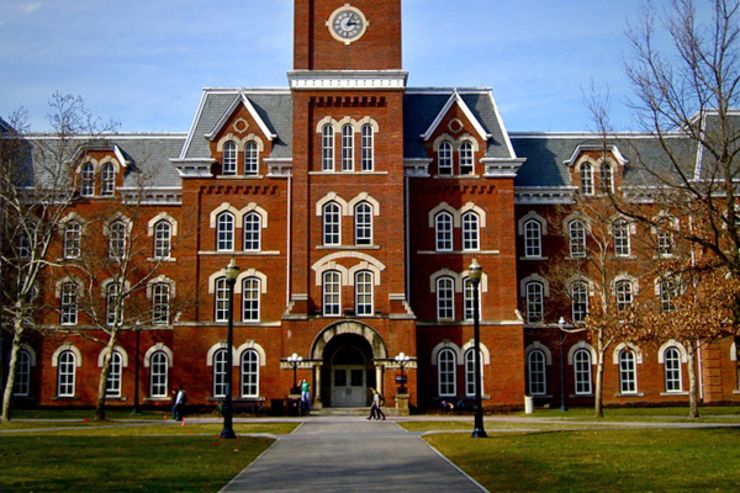
When Democratic presidential candidate Elizabeth Warren earlier this week unveiled the details of her bill to cancel student debt, she stressed how it would deliver significant financial relief to borrowers of color.
“The day our bill gets signed into law, that black-white wealth gap would shrink by 25 points,” the Massachusetts senator said. Under the proposal, introduced along with Rep. James E. Clyburn, D-S.C., borrowers with household incomes under $100,000 would get $50,000 of their student debt forgiven. Higher earners would get a smaller share of their debt voided.
Black borrowers do stand to benefit greatly from Warren’s bill. That’s because, by almost every measure, the student debt crisis has hit them especially hard.
“The racial wealth gap is both the biggest and has grown the fastest among those with a college education,” said Jason Houle, assistant professor of sociology at Dartmouth College. ”[S]tudent loan debt [is] potentially one thing that explains why that’s happened.”
Nearly 85% of black bachelor’s degree recipients carry student debt, compared with 69% of white bachelor’s degree recipients, according to the Center for Responsible Lending, a non-profit in Durham, N.C.
The average white student loan borrower owes around $30,000; the average black borrower owes closer to $34,000. White borrowers pay down their education debt at a rate of 10% a year, compared with 4% for black borrowers. Nearly 38% of all black students who entered college in 2004 had defaulted on their student loans within 12 years, a rate more than three times higher than their white counterparts, according to the Brookings Institute.
To understand why debt weighs heavier on black Americans than their white counterparts, you have to look into the past, said Julia Barnard, a student debt expert at the Center for Responsible Lending. “There’s structural discrimination,” Barnard said. “It’s a larger civil rights issue.”
The promise of the G.I. Bill — which offered tuition assistance to Americans who had served in the armed forces — went largely unfulfilled for African Americans, writes Hilary Herbold in an article for The Journal of Blacks in Higher Education.
The law, passed in 1944, didn’t discriminate by race, at least in the education benefits provision, but its terms were “interpreted one way for blacks and another for whites,” Herbold writes. She tells the story of a black veteran who already had a bachelor’s degree but sought to use his G.I. Bill benefits to complete a master’s degree. “The Veterans Administration denied the claim, informing him that he needed no further education,” Herbold writes.
Even for black veterans who were offered tuition assistance by the government, there was the challenge of finding a seat on campus. Fewer historically black colleges existed back then, and other colleges set official or unofficial quotas on how many black students they would admit.
“White institutions in both the North and South were essentially closed to blacks in the 1940s,” Herbold writes. At the University of Pennsylvania in 1946, for example, just 46 out of 9,000 students were black.
More African Americans are attending college today than ever before. Nearly 1 in 4 black people between the ages of 25 and 29 hold a college degree, up from 1 in 10 in 1968. As colleges become more diverse, however, they’ve also become exponentially more expensive. One year at a nonprofit, four-year private college, including tuition, room and board, currently costs $48,510, compared with $22,240 in 2000, according to Mark Kantrowitz, the publisher of SavingForCollege.com.
State funding for two- and four-year public colleges plummeted after the Great Recession, and the cost of attendance has been shifted to families. In 2016, public colleges and universities received about 1.2 times as much revenue from states and localities as from students, compared with 3.2 times as much in 1988. “Funding has been dropping as the student body has been diversifying,” Barnard said.
To cover these high college tabs, students are taking on more debt. Black students have less family wealth to draw on — according to one analysis, the median wealth of white families in 2016 was $171,000, compared with $17,409 for black families — and so they often need to borrow more.
To make matters worse, Barnard said, black students are disproportionately targeted by for-profit colleges, which have come under scrutiny for their high price tags and poor outcomes. More than a quarter of black students attend these four-year schools, compared with 10% percent of white students.
Shaun Joyce was at a college fair in Greensboro, North Carolina, when someone from the Art Institute called him and his mother over to the for-profit school’s stand. Joyce, 17 at the time, told the man he was interested in studying video game design. “He said, ‘We have that!’” Joyce decided to attend.
“I was really excited,” Joyce, now 30, said. “It was a point of pride for me to get a degree.” His mother attended college and planned to study criminal justice but had to drop out when she became pregnant with him.
Without any family savings to draw on, Joyce took out more than $60,000 in student loans. Like many other former students of the Art Institute, which at one point had some 50 campuses across the country, he said the education there proved a complete disappointment. “I never actually learned video game design,” Joyce said.
Today he works from home, writing recorded phone messages for companies, and earns around $30,000 a year. In the meantime, his student debt has ballooned to over $100,000. He’s fallen behind on many of the payments, causing his credit score to tank. He doesn’t qualify for car loans. Even finding a landlord to rent to him was a struggle.
“I’m 30 but my life still feels like I’m 18 because it hasn’t been able to move anywhere,” Joyce said.
